

EYLF Outcome 1 Floorbook prompts for identity, belonging, autonomy, emotional well-being, and empathy. Includes child‑voice questions, educator reflections, group prompts, and page starters.
Outcome 1 of the EYLF focuses on identity: a child’s sense of belonging, autonomy, emotional safety, and connection to others. Floorbooks are a powerful way to capture this learning because they centre children’s voices, make thinking visible, and document identity as it unfolds in real time.
A clear, practical EYLF Outcome 1 cheat sheet for educators, with examples, observation wording, and strategies to document children’s identity, belonging, autonomy, emotional well-being, and respectful relationships across daily routines.
Outcome 1 is the foundation of early childhood learning; everything else grows from here. It focuses on children’s identity: how they see themselves, how safe and supported they feel, and how they relate to others. When children experience belonging, security, autonomy, emotional well-being, and respectful relationships, they develop the confidence and resilience needed for all future learning.
This cheat sheet gives educators a practical, easy‑to‑use guide to understanding, observing, and documenting Outcome 1 across everyday routines. With clear indicators, real-world examples, and ready‑to‑use documentation prompts, educators can capture meaningful learning without unnecessary paperwork.
Building secure, trusting relationships is the heart of early childhood education, and EYLF Outcome 1.1 places this at the centre of children’s learning and well-being. Before children can explore, communicate, or engage confidently with others, they must first feel safe, supported, and emotionally held within their environment.
Learn how to understand, support, and document EYLF Outcome 1.1 with clear examples, practical strategies, and observation wording that help educators build secure, trusting relationships in early childhood settings.
Daily experience Journals are a cornerstone of communication between educators and families. They provide parents with a snapshot of what their children explored, learned, and enjoyed during the day. Yet, when working with a whole group, efficiency and clarity become essential.
“Thank You for the Memories” is a beautifully crafted end‑of‑year portfolio template designed to help educators farewell each child with warmth, gratitude, and a lasting memento of their time in care. Simple yet deeply meaningful, this template captures the emotional essence of early childhood education connection, belonging, and shared experiences.
Linking to the EYLF is one of the most misunderstood parts of early childhood documentation. Many educators feel pressured to attach outcome numbers to every observation, photo, or program entry even though this is not required by the National Regulations, the EYLF, or ACECQA.
This guide offers a clear, practical approach to linking that centres professional judgment, meaningful learning, and low‑paperwork practice. Instead of coding everything, educators can use linking strategically only when it genuinely supports planning, communication, or assessment.
A: No. There is no requirement in the National Regulations, the EYLF, or ACECQA guidance that says educators must add EYLF outcome numbers, sub‑outcomes, or codes to observations. Linking is optional, not mandatory.
Documentation should support children’s learning, not overwhelm educators. When linking becomes a tick‑box exercise, it loses meaning and adds unnecessary workload. This article breaks down what’s actually required, what’s optional, and how to use EYLF links only when they genuinely add value.
Observing children has never been the problem. Educators are natural noticers—tuned into the small sparks, the emerging skills, the quiet breakthroughs. What drains time and energy isn’t the observing but the unnecessary layers of documentation that have crept into practice over the years. Long stories, duplicated uploads, rigid templates, and quota‑driven expectations have turned a simple professional tool into a paperwork burden.
But the truth is simple: meaningful observations are brief, flexible, and entirely manageable. When we strip away the excess, we return to what the planning cycle was always meant to be—a clear, responsive loop that supports children’s learning and frees educators to do what they do best.
Art in early childhood is far more than paint, paper, and glue it is a language of identity, exploration, and meaning‑making. When children create freely, they reveal how they see the world, how they solve problems, and how they express emotion. Yet in many settings, art experiences still lean heavily toward adult‑directed crafts, templates, and identical products. These practices can unintentionally limit children’s agency, creativity, and confidence.
This guide invites educators to pause, question, and re‑envision their role in children’s artistic experiences. Through reflective prompts and practical shifts, it supports teams to cultivate environments where creativity thrives, individuality is celebrated, and every child’s artistic “voice” is valued.
Snapshots Of My Year is a thoughtfully designed template that helps educators document and celebrate a child’s growth through the lens of the EYLF learning outcomes. With its photo-rich format and reflective comment sections, it offers families a warm, visual summary of their child’s developmental journey.
 As an Educator in Australia, your pay rate falls under the Children’s Services Award 2010. This award states the minimum amount that an employer can… Read More
As an Educator in Australia, your pay rate falls under the Children’s Services Award 2010. This award states the minimum amount that an employer can… Read More
 When working as a qualified Early Childhood Teacher (with a university degree) within a service, your rate of pay will come from the Educational Services… Read More
When working as a qualified Early Childhood Teacher (with a university degree) within a service, your rate of pay will come from the Educational Services… Read More
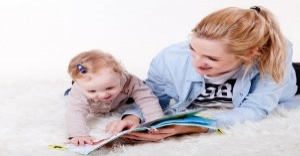 When working as a Diploma Qualified Educator your pay rate is from the Children's Services Award 2010. This Award states your minimum rate of pay… Read More
When working as a Diploma Qualified Educator your pay rate is from the Children's Services Award 2010. This Award states your minimum rate of pay… Read More
 When working as a Cert 3 Qualified Educator, your pay rate is from the Children's Services Award 2010. This Award states your minimum rate of… Read More
When working as a Cert 3 Qualified Educator, your pay rate is from the Children's Services Award 2010. This Award states your minimum rate of… Read More
 Educational Leaders play a crucial role in their early childhood service by ensuring that the educational program aligns with best practices and supports the holistic… Read More
Educational Leaders play a crucial role in their early childhood service by ensuring that the educational program aligns with best practices and supports the holistic… Read More
 In early childhood education and care, ratios are more than a technicality—they are a frontline safeguard. Every child deserves responsive supervision, emotional connection, and developmental… Read More
In early childhood education and care, ratios are more than a technicality—they are a frontline safeguard. Every child deserves responsive supervision, emotional connection, and developmental… Read More
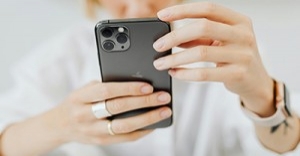 Here’s a comprehensive Mobile Phone and Smart Watch Policy tailored for early childhood education and care (ECEC) services in Australia, aligned with the latest 2025… Read More
Here’s a comprehensive Mobile Phone and Smart Watch Policy tailored for early childhood education and care (ECEC) services in Australia, aligned with the latest 2025… Read More
 With the new national child safety reforms kicking in on 1 September 2025, early childhood services like yours have a real opportunity to lead the… Read More
With the new national child safety reforms kicking in on 1 September 2025, early childhood services like yours have a real opportunity to lead the… Read More
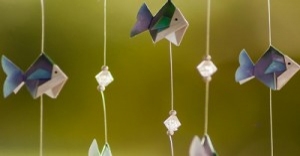 The Sea of Fish Challenge is a national initiative that invites children, educators, families, and communities to create and display fish artworks as a symbol… Read More
The Sea of Fish Challenge is a national initiative that invites children, educators, families, and communities to create and display fish artworks as a symbol… Read More
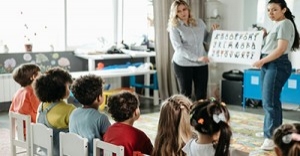 Across the early childhood education and care sector, educators are sounding the alarm: current staffing ratios are insufficient to deliver safe, meaningful, and developmentally appropriate… Read More
Across the early childhood education and care sector, educators are sounding the alarm: current staffing ratios are insufficient to deliver safe, meaningful, and developmentally appropriate… Read More

Children begin to learn that music and movement communicate messages and represents actions. Music naturally delights...
See more...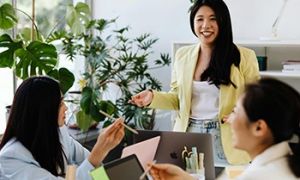
Early childhood education thrives on diversity. Multicultural teams bring rich perspectives, lived experiences, and linguistic...
See more...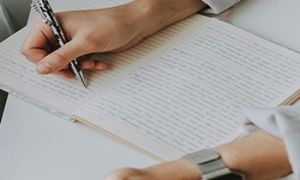
A: A narrative observation in childcare is a detailed, written account of a child's actions, interactions...
See more...© 2009-2025 Aussie Childcare Network Pty Ltd. All Rights Reserved.

